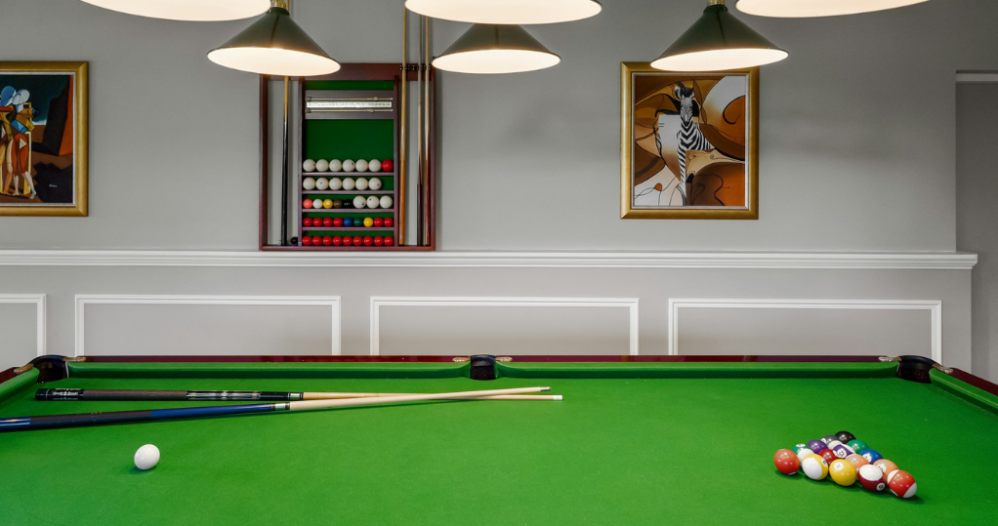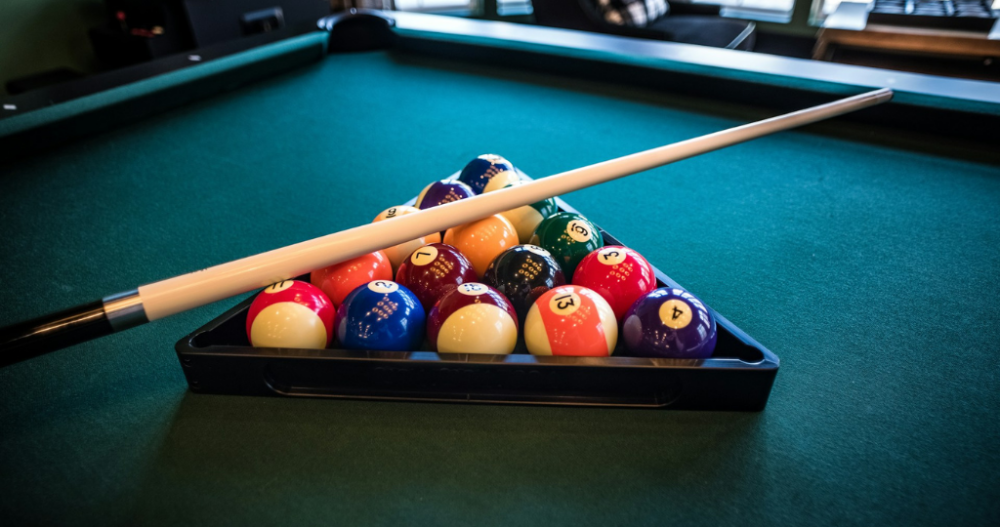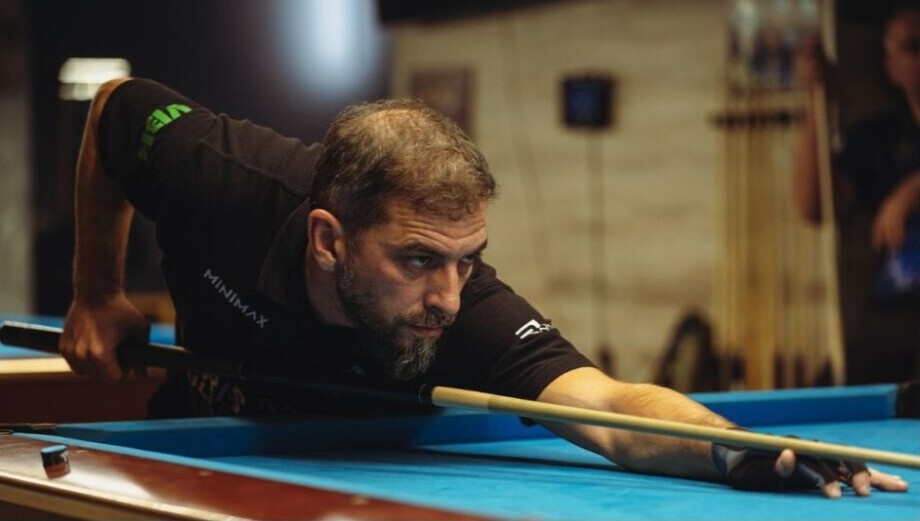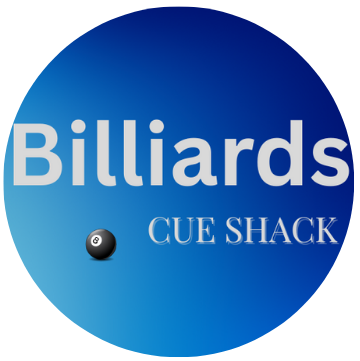 Choosing the right billiard cue is a task that can really shape your playing experience. I’ve spent a lot of time trying different cues, and I know first-hand how important it is to find one that fits your style. Whether you’re a beginner or you’ve been playing for years, understanding the different factors involved in selecting a cue can help improve your game and stroke your confidence on the table. In my many hours at pool halls and tournaments, every cue I picked up taught me something new about precision, control, and personal comfort. The process of searching for the perfect cue is both personal and technical, and it rewards those who are willing to experiment and learn from each stroke.
Choosing the right billiard cue is a task that can really shape your playing experience. I’ve spent a lot of time trying different cues, and I know first-hand how important it is to find one that fits your style. Whether you’re a beginner or you’ve been playing for years, understanding the different factors involved in selecting a cue can help improve your game and stroke your confidence on the table. In my many hours at pool halls and tournaments, every cue I picked up taught me something new about precision, control, and personal comfort. The process of searching for the perfect cue is both personal and technical, and it rewards those who are willing to experiment and learn from each stroke.
Understanding the Basics of Billiard Cues
Billiard cues come in various shapes, sizes, and materials, each designed to complement different styles of play. Having the right cue is not only about aesthetics. It is about control, precision, and comfort during your game. I’ve learned that a cue should feel like an extension of your arm, responding naturally to each stroke and turn. In this section, I’ll break down the basics so you can start thinking about what really matters when picking a cue.
One of the most important components is the cue tip, because it is the part that makes contact with the cue ball. Tips come in different sizes, compositions, and hardness levels, all of which affect your spin and control. Additionally, cues vary with regard to weight balance, length, and shaft construction. Spending time understanding these differences can make it easier to decide on a cue that aligns with your playing style. For many players, the feeling of the cue in hand during those quiet moments in the break or when lining up a tough shot can make all the difference. The way a cue responds when you put just the right amount of force into a shot is what helps transform a good game into a great one.
Furthermore, the materials used in crafting a cue play a significant role in durability and performance. Traditional wooden cues provide a warm, natural feel whereas composite materials are known for their next-level cool responsiveness and stability. Extra care in understanding these materials, along with the manufacturing quality, gives any player an edge by ensuring the cue performs reliably every time.
Factors to Consider When Choosing Your Billiard Cue
There are several key features that you should consider before making your selection. I always start by focusing on these very important elements:
- Weight and Balance: A well-balanced cue should feel natural when you hold it. Some players prefer a heavier cue for more controlled strokes, while others enjoy a lighter cue for faster movements. Testing cues in person, if possible, offers very important insight into what works best for you. It isn’t just about the price or brand. Price and brand are one aspect, but what truly matters is how the cue feels in your hands during those practice sessions. That tactile experience is often the best guide.
- Cue Tip Size and Hardness: The tip size is crucial since it affects precision. Many professional players opt for a tip around 12 to 13mm in diameter since it provides a good balance between control and the ability to impart spin. Hardness can vary; softer tips tend to provide more spin but wear faster, while harder tips offer durability and produce more consistent results. Experimenting with different tip sizes can help you decide on the exact balance of finesse and power for your particular game style.
- Shaft Material and Construction: Most cues are made from a combination of wood and other materials, which can influence flexibility and stability. For example, a cue made entirely of high-quality wood may offer a softer feel, while composite shafts might deliver a more rigid response. Understanding these differences can help you select the cue that adapts best to various playing conditions, whether you are in a friendly game or nearing a competitive match.
- Joint Type: The joint where the tip meets the shaft is the point of energy transfer. Some cues have a fixed joint design with minimal movement, whereas others incorporate a twist mechanism that can boost feedback and precision. Paying close attention to the joint type can greatly impact the rhythm and timing of your stroke, as different designs deliver a distinct feel.
When you consider all these aspects together, it becomes much easier to narrow down the options and select a cue that suits your personal playing style. Taking the time to thoroughly test various cues and understand the nuances of each component is a rewarding process that can really transform your game.
Many players find that developing an intimate connection with their cue is an ongoing process—something that evolves through experience and repetition. Over time, this familiarity can even help you anticipate how slight modifications might improve your performance during crucial moments in a match.
Getting Started: How to Select a Cue
 When you step into a store or browse online, the first question you might ask yourself is, “How do I select a cue?” I start by determining what fits best with my style of play. Here are some practical steps that I rely on:
When you step into a store or browse online, the first question you might ask yourself is, “How do I select a cue?” I start by determining what fits best with my style of play. Here are some practical steps that I rely on:
- Determine Your Playing Style: Are you a strategic, defensive player or do you prefer aggressive, power-driven strokes? Knowing your style makes a big difference. For example, a more controlled cue might work well for defensive players, while power players may favor a cue with a heavier build to support robust strokes. Spending extra time reflecting on your own strengths and weaknesses can help you better understand your needs and ultimately lead you to the right choice.
- Test Different Weights and Balances: It is essential to spend time holding cues with varying weights and balances. Many pool halls offer cue rentals, which give you valuable experience in finding what suits your natural swing. Not every cue will feel comfortable immediately, so it pays off to be patient and explore a variety of options.
- Experiment with Tip Sizes: Although many professionals use tips in the 12 to 13mm range, your personal preference might differ. Small differences in tip size can influence cue ball control and affect the spin you can produce. If possible, try different tip sizes to see which one gives you that extra bit of control on those tricky shots.
- Consider Your Budget: While it’s true that higher-end cues often use better materials and craftsmanship, an expensive cue isn’t automatically the perfect choice for every player. Ultimately, it is more important that the cue matches your personal style and comfort level than just having an expensive piece of equipment.
- Seek Advice From Experienced Players: I often ask fellow players for their insights and recommendations. There is plenty of valuable advice from those who have spent years refining their technique with different cues. Listening to experts can help you avoid common pitfalls and steer you toward choices that have worked well for others in your situation.
These steps have been really helpful for me in choosing a cue that truly fits my style. I have found that spending long hours experimenting with different cues, even during casual practice sessions, can significantly improve your familiarity with what works best. With time, you will develop an intuition for which features to prioritize, making the process both exciting and enlightening.
To add further insight, I recommend taking note of your performance in various practice scenarios. Write down your impressions after testing each cue—this detailed note-taking can be a game changer in understanding the subtle differences that affect your game.
Specific Considerations for Various Playing Styles
Every player has a unique approach to the game, so the cue that works perfectly for one person might not suit another at all. I have noticed several factors that emerge as particularly significant depending on your style of play. Here are some common scenarios to consider:
- Defensive or Precision Play: If your game is built on accuracy and safety, a cue with excellent balance and a slightly softer tip might be ideal. A softer tip gives you the finesse needed to execute delicate shots and control the ball’s spin—a very important characteristic for defensive play. This style of play often requires a cue that can handle subtle variations in stroke speed and angle, ensuring that each shot is both safe and calculated.
- Aggressive or Power Play: Players who rely on strong, forceful strokes may prefer a cue that leans toward a heavier weight and features a harder tip. This combination often provides the power required for breaking clusters of balls during aggressive maneuvers on the table. In addition, a cue designed for power players is typically built to withstand more intense impacts, ensuring longevity even with frequent heavy use.
- Shot Makers and Trick Players: If you enjoy experimenting with spin and various shot types, you might benefit from a cue that allows for adjustments in tip hardness and contact points. Such flexibility is essential when you are trying to pull back the curtain on complicated shots and maneuver the cue ball into challenging positions. Tailoring your cue to accommodate a variety of shot types can open up a whole new world of creative play on the table.
Understanding your style is a key part of figuring out which pool cue is best for you. Keep in mind that there is no one-size-fits-all solution. Instead, allow the features of the cue to complement the strengths and counterbalance the weaknesses of your game. Over time, fine-tuning your equipment to suit your style can lead to noticeable improvements in both confidence and performance.
If you find yourself in a situation where the conditions of the game change, such as different table speeds or unpredictable opponent strategies, having the right cue tailored to your style can be a major advantage. Thoughtful adjustments and periodic reviews of your cue selection process will keep you ahead of the curve.
Advanced Tips for the Experienced Player
 After getting past the basics and settling on a cue that feels comfortable, I started exploring advanced ways to take my performance up a notch. Experienced players have the opportunity to experiment further by making subtle modifications that can boost their game even more. Here are a few advanced tips that have worked well for me:
After getting past the basics and settling on a cue that feels comfortable, I started exploring advanced ways to take my performance up a notch. Experienced players have the opportunity to experiment further by making subtle modifications that can boost their game even more. Here are a few advanced tips that have worked well for me:
Customize Your Tip and Ferrule: Some players choose to modify their cue tips to adjust the hardness or size further. Doing this can help you fine-tune your spin and precision, even after you’ve chosen a cue you already like. Experimenting with custom fittings allows you to tailor every aspect of your cue’s interaction with the ball, leading to more consistent performance.
Maintain Your Cue Regularly: Regular cleaning and upkeep are very important in keeping your cue in top shape. I make it a habit to replace worn tips and clean the cue’s shaft periodically. Consistent maintenance ensures that the cue remains balanced and responsive over time, which can be a decisive factor during high-stakes matches. A well-cared-for cue will always feel more dependable compared to one that has been neglected.
Experiment with Chalk and Shot Technique: A significant part of mastering a cue is related to your technique and how you use chalk. Consistent use of chalk can reduce miscues, and even slight changes in how you cue up a shot can lead to different outcomes. I often try out different chalk brands to see which one best suits my style, and gradually, these small adjustments help me discover new levels of control and finesse on the table.
Additionally, advanced players can benefit from analyzing their stroke mechanics in detail. Recording practice sessions and reviewing them later can reveal patterns or inconsistencies that might not be immediately noticeable during the heat of the game. This self-review process is invaluable for taking your game to the next stage.
The Basics: Tips for Beginners and Intermediate Players
For those just starting out or looking to upgrade from an entry-level cue, keeping things simple and straightforward is key. I remember when I was a beginner, having a cue that was easy to handle allowed me to build a solid foundation in technique and consistency. Here are some tips that I suggest for beginners:
- Start with a Mid-Range Cue: It makes sense to begin with a moderately priced cue that offers decent performance and durability. This approach lets you explore different techniques without the worry of damaging an expensive piece of equipment. It is always wise to start with equipment that won’t break the bank while still offering reliable performance.
- Focus on Consistency: A cue that consistently performs as expected can really boost your confidence. For new players, every hit is an opportunity to learn, and having a reliable cue means you can concentrate on improving your technique instead of compensating for equipment flaws.
- Learn the Importance of Maintenance: No matter what level of play you are at, keeping your cue well-maintained is really important. Simple steps like regular cleaning, proper storage, and occasional tip replacements can make a significant difference in the responsiveness of your cue over time.
- Practice Regularly: The best cue is the one you practice with day in and day out. By dedicating time to regular practice sessions, you begin to pick up on the subtleties of your cue’s performance. Over time, you will be able to judge what improvements or changes might benefit your game as your skills progress.
Beginners often find that a forgiving cue, one that is both reliable and simple to master, is essential for building lasting confidence. As your skills improve, you will naturally begin to look for cues with more customizable features that match your evolved style of play.
For those in the intermediate stages, it might be beneficial to invest in a cue that offers room for adjustments. This way, you can experiment with different chalk techniques, tip modifications, and weight balances. Over time, this approach can lead to a more personalized feel and improved performance in competitive scenarios.
Frequently Asked Questions
This section addresses some common questions I get asked about choosing the right billiard cue. I have gathered insights over many years of both playing and watching experienced players in action.
Question: How do I know what pool cue is best for me?
Answer: I found that the best way to figure out the right cue is to try out different models. Consider factors such as weight, balance, and tip size as you evaluate how they feel with your natural stroke. Spending time with a cue during dedicated practice sessions is a great strategy to see if it lines up with your style.
Question: How do I select a cue?
Answer: Start by assessing your own playing needs to decide whether you lean towards a defensive or aggressive mode. Look for cues that match your preferences in balance, tip size, and material. It also helps to speak with experienced players and test out several options before making a final decision.
Question: Do expensive pool cues make a difference?
Answer: While high-end cues are often crafted from top-quality materials and precision engineering, they might not be necessary for every player. Instead of focusing solely on price, it is better to choose a cue that feels right in your hands and suits your style of play. A pricey cue is not automatically a guarantee of success on the table.
Question: What size tip do most professional pool players use?
Answer: Most professionals tend to favor a tip size of around 12 to 13mm since this size offers a good balance between control and spin generation. Of course, individual preferences can vary slightly based on personal playing techniques and comfort levels with their equipment.
Wrapping It All Up
Choosing the right billiard cue is an ongoing process that evolves as you develop your skills. I have learned that picking a cue is not just about selecting one that looks attractive on the wall. It is about finding one that truly integrates with your playing style and gives a boost to your confidence every time you step up to the table.
By understanding the basics, focusing on essential features like weight, balance, and tip size, and practicing regularly with your chosen cue, you set yourself up for more satisfying performances. The adventure of finding your ideal cue comes with experiments, adjustments, and plenty of trial and error. Every step in the process adds to the overall experience and deepens your connection with the game.
If you ever find yourself frustrated by a missed shot or questioning your equipment, remember that refining your cue is part of the journey. Each adjustment—no matter how small—contributes to a better understanding of the game. Spend time with your cue, note its responses to various strokes, and let your experience guide you to the perfect match.
The world of billiards is rich with traditions and evolving techniques. Whether you are just starting or have been honing your skills for years, investing the time to research, test, and refine your choice of cue will pay dividends. Your perfect cue is out there, waiting for you to stumble upon it, so get out there, experiment with different options, and let your natural feel for the game guide you to success. Enjoy each moment at the table and trust that every practice session is molding you into a better, more confident player.
Ultimately, finding the ideal billiard cue is a personal endeavor. It is a blend of technical know-how, perseverance, and an openness to try new things. So take your time, ask questions, and most importantly, relish every step of the process. The satisfaction that comes with making that perfect shot is well worth the effort you put into finding the cue that truly belongs in your hands.
